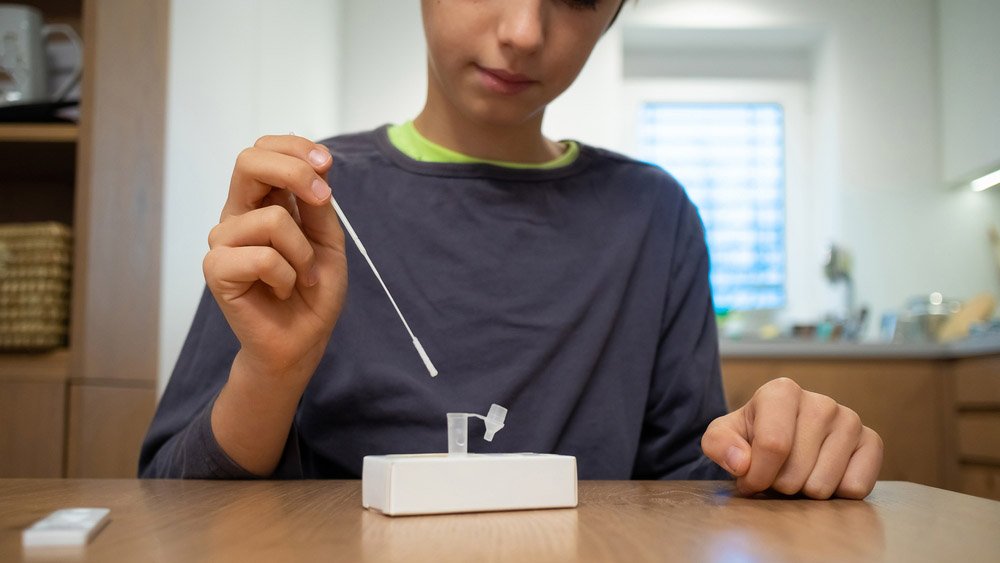In the early days of direct-to-consumer genetic tests, most physicians had little interest — and perhaps even less trust — in the DNA results delivered to their patients. More than a decade later, healthcare professionals are finally coming around. At a recent conference, clinical genetics experts debated how, but not whether, to incorporate such test results into the medical realm.
Years ago, direct-to-consumer genetic tests got off to a rocky start. Many had been developed prematurely, before the actual connection between genetic data and its effect on human health or other traits had been established. Some consumers got confusing or incorrect data. Several tests offered in the early days were little more than snake oil.

As tests ventured beyond recreational uses — such as telling a person’s ancestry or whether the consumer was more likely to be a night owl or a morning person — the FDA cracked down on services offering health-related results. Unlike commercially available tests performed in clinical laboratories, these direct-to-consumer tests had been developed and commercialized without going through the rigors of FDA review. The agency, and many industry stakeholders, worried that the tests might be inaccurate or unreliable, or simply lack the context needed for a consumer to make an informed healthcare decision based on the results.
While consumers remained eager to take these tests, the physicians to whom they often brought their results were far less enthusiastic. In addition to the skepticism with which they viewed tests that had not been reviewed by the FDA, many doctors acknowledged that the paltry genetics training they received in medical school had not prepared them to interpret the DNA results generated by this new breed of test.
As a journalist covering this field since its inception, I witnessed and reported on these debates and trends as they emerged. So it was a pleasant surprise to attend a session on direct-to-consumer genetic testing at the recent annual meeting of the American College of Medical Genetics and Genomics and find that this community of clinical genetics experts was now willing to incorporate consumer-driven data into their medical practice, despite lingering doubts about the usefulness of these results.

Mylynda Massart, a family medicine physician who works at UPMC, a medical center associated with the University of Pittsburgh, said that primary care physicians are often the first to see these results. “As direct-to-consumer companies are returning more and more clinically relevant information, some of that information can be intimidating, anxiety-provoking, even honestly quite scary,” she said. When that happens, consumers tend to go to the first doctor they can get an appointment with, and that’s typically a primary care doc who’s not likely to have extensive experience in interpreting genetic test results. Some of the most common types of results are about a patient’s risk of developing cancer or predicted response to certain types of medication.
Massart shared the case of a patient whose direct-to-consumer test revealed three pathogenic DNA mutations; in follow-up clinical testing, all three were found to be errors. This kind of follow-up testing, performed when needed, will be important for ensuring that direct-to-consumer results are appropriately verified for clinical use.
But confirmatory testing is not always easy to do if a patient’s case turns urgent. Houriya Ayoubieh, an internal medicine specialist at Texas Tech University, noted that patients often reveal these direct-to-consumer results when they’re in the hospital, where timelines might not allow for follow-up testing of these results. Adding to the confusion, clinical testing is not always accurate: panelists offered an example where the direct-to-consumer result was correct but the confirmatory lab test was not.
Hospital workers need guidelines for how to weigh these kinds of results, Ayoubieh said. She also noted that asking whether the patient had undergone any genetic testing might be a useful addition to the standard process of taking a patient’s health history.
For some patients, that family health history may only be available through genetic testing. Heewon Lee, a genetic counselor at the Park Nicollet Frauenshuh Cancer Center, spoke about the challenges of people who were adopted or conceived by donor eggs or sperm. “Direct-to-consumer genetic testing can actually open a door to adoptees,” she said. “It is the only link they have to their genetic family history.”
As part of the presentation, panelists offered a draft set of recommendations for how to incorporate direct-to-consumer genetic results into clinical use. They included guidelines for performing follow-up testing for results that might change a patient’s care, pulling in genetic counselors and other genetic experts to help interpret results, and adding results to the patient’s electronic medical record for future reference.
There will no doubt be plenty more debate about how best to weave direct-to-consumer results into clinical use, but reaching this point at all shows tremendous progress in the medical community.

















